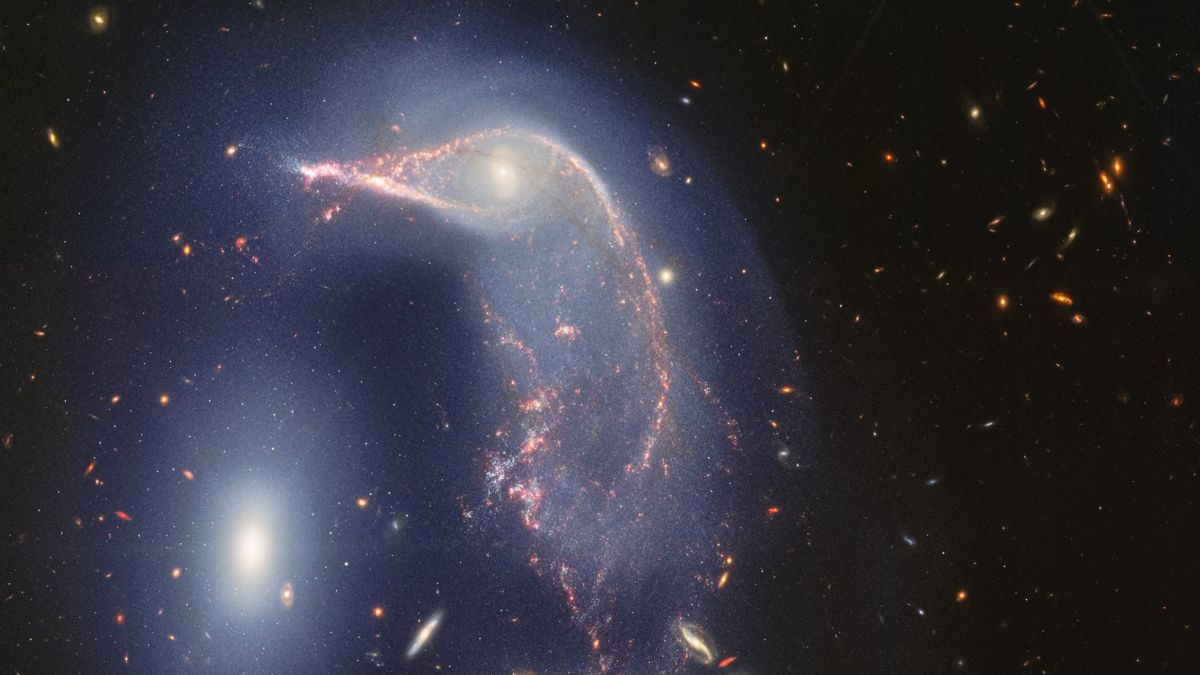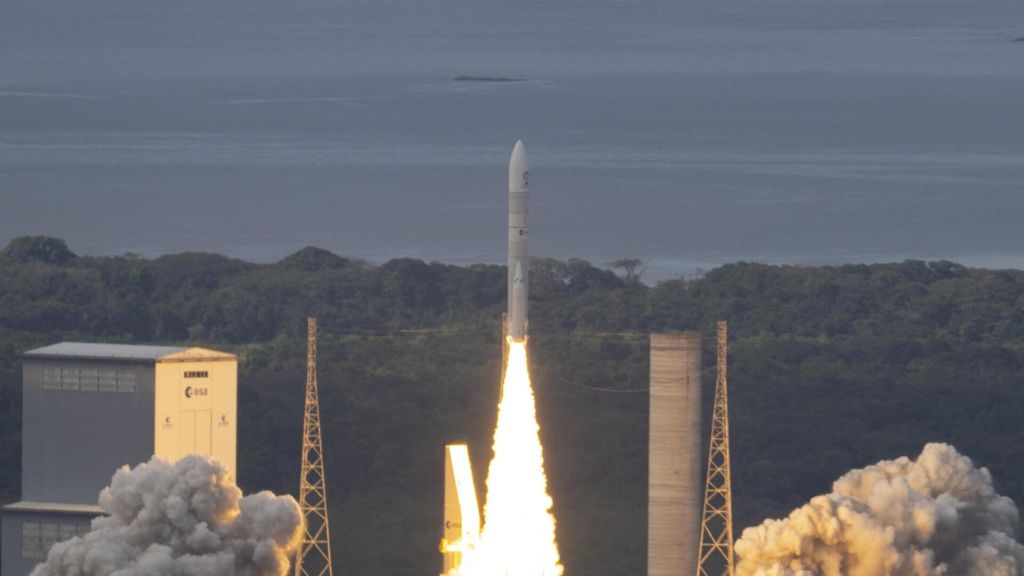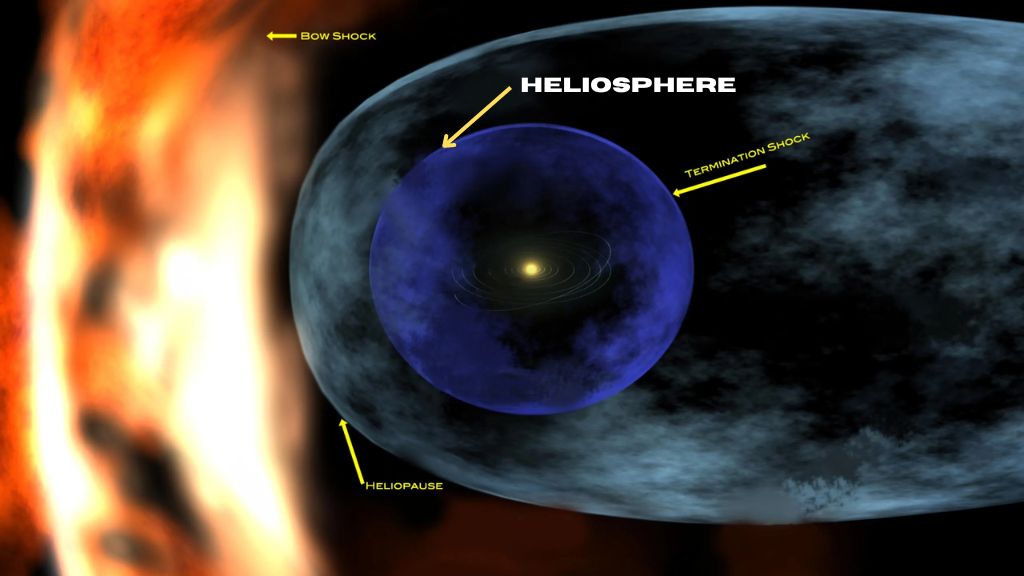NASA’s James Webb Space Telescope (JWST) has reached a significant milestone, marking its second year of scientific exploration. To commemorate this achievement, the JWST team has unveiled a captivating near- and mid-infrared image of two interacting galaxies, the Penguin and the Egg.
Penguin and Egg
The Penguin (individually cataloged as NGC 2936) and the Egg (NGC 2937) are collectively known as Arp 142. Their cosmic dance has been ongoing for millions of years, and this image captures their intricate interaction. Let’s delve into the details:
- The Penguin and the Egg: A Celestial Embrace
- The distorted spiral galaxy at the center, affectionately nicknamed the Penguin, and the compact elliptical galaxy to the left, playfully called the Egg, are locked in an active embrace.
- This mesmerizing image combines data from the JWST’s Near-Infrared Camera (NIRCam) and Mid-Infrared Instrument (MIRI).
- The glow of scattered stars, represented in blue, reveals the dynamic interaction between these galactic neighbors.
- Arp 142 made its first pass by one another between 25 and 75 million years ago, igniting “fireworks” of new star formation in the Penguin.
- The Dance Continues
- The Penguin and the Egg are approximately the same mass, preventing one from consuming the other.
- Their gravitational tango will continue as they complete several additional loops before eventually merging into a single galaxy hundreds of millions of years from now.
- Webb’s Unique Perspective
- The JWST specializes in capturing infrared light, extending our vision beyond what our eyes can perceive.
- Infrared observations allow us to study these galaxies in unprecedented detail, revealing hidden structures and processes.
As we celebrate the second anniversary of the James Webb Space Telescope, we marvel at the cosmic choreography of the Penguin and the Egg. Their celestial waltz serves as a testament to the telescope’s remarkable capabilities and our quest to unravel the mysteries of the universe.





